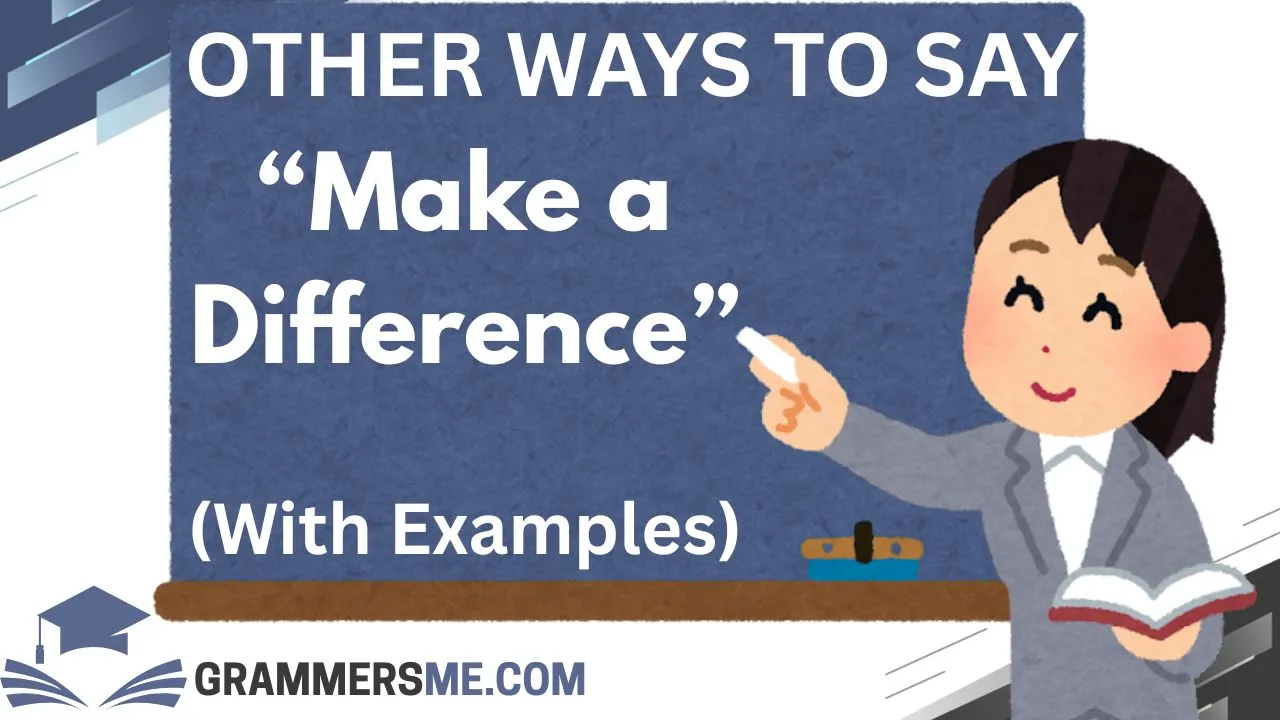Finding the right words can transform a message from ordinary to heartfelt. While “firstly, secondly, thirdly” helps organize thoughts logically, it can sometimes come across as too formal or robotic. If you’re aiming to sound more thoughtful, warm, and approachable, switching to more natural, conversational phrasing can help your message resonate more deeply—whether you’re writing an email, giving a presentation, or having a meaningful conversation. Let’s explore 30 kinder, more human alternatives to help you structure your thoughts with care and clarity.
What Does “Firstly, Secondly, Thirdly” Mean?
Meaning: “Firstly, secondly, thirdly” is a structured way to list points or steps in a sequence, especially in written communication or speeches.
Detailed Explanation: These ordinal adverbs help organize ideas clearly. They’re often used in formal writing and speeches to present arguments, instructions, or thoughts in a logical order. While effective, they can sometimes feel stiff or impersonal.
Tone: Formal, logical, structured.
Is It Professional/Polite to Say “Firstly, Secondly, Thirdly”?
Yes, it is professional and polite, especially in academic or formal business contexts. However, if you’re aiming for a more human-centered or conversational tone, especially in modern workplace or casual settings, softer and more fluid alternatives are often preferred.
1. To start, then, and finally
Meaning: An easygoing way to begin, continue, and wrap up your points.
Explanation: This sequence feels conversational while still offering clarity.
Example: “To start, let’s review last quarter’s goals. Then, we’ll discuss what worked well. And finally, we’ll explore areas for improvement.”
Best Use: Presentations, meetings, or friendly emails.
Not Use: Highly formal writing or academic essays.
2. First off, next, and last
Meaning: A casual and warm alternative to guide your listener or reader through your thoughts.
Explanation: This keeps things light without sacrificing structure.
Example: “First off, thank you for being here. Next, I want to touch on our vision. And last, I’ll take your questions.”
Best Use: Speeches, team updates, or blog posts.
Not Use: Formal reports.
3. To begin with, afterward, and finally
Meaning: Slightly more formal but still gentle in tone.
Explanation: This works well when you want to add a touch of polish.
Example: “To begin with, we focused on user experience. Afterward, we addressed feedback. Finally, we launched the new design.”
Best Use: Emails or reports with a balanced tone.
Not Use: Very casual conversation.
4. First, second, third
Meaning: A simplified version of “firstly, secondly, thirdly.”
Explanation: More modern and accessible, still very clear.
Example: “First, we researched. Second, we planned. Third, we executed.”
Best Use: Professional settings where clarity is key.
Not Use: Highly conversational or creative writing.
5. Initially, then, ultimately
Meaning: Smooth and slightly formal.
Explanation: Helps guide the reader with a touch of sophistication.
Example: “Initially, we aimed to raise awareness. Then, we ran a pilot program. Ultimately, we scaled it.”
Best Use: Strategic documents, formal emails.
Not Use: Spontaneous conversation.
6. One thing, another thing, and lastly
Meaning: Casual and people-focused.
Explanation: Perfect for connecting with readers in a blog or message.
Example: “One thing I love is the teamwork here. Another thing is how we support each other. And lastly, our shared goals.”
Best Use: Friendly letters, blogs, or team chats.
Not Use: Technical writing.
7. Let’s start with, moving on to, and to wrap up
Meaning: Conversational and clear.
Explanation: Feels like a natural flow in a meeting or workshop.
Example: “Let’s start with logistics. Moving on to timelines. And to wrap up, let’s set next steps.”
Best Use: Live discussions, email updates.
Not Use: Academic papers.
8. First and foremost, secondly, in conclusion
Meaning: A polished version with emphasis.
Explanation: Adds weight to the initial point while still flowing smoothly.
Example: “First and foremost, we prioritize safety. Secondly, we ensure quality. In conclusion, we strive for excellence.”
Best Use: Keynote addresses, leadership messages.
Not Use: Chit-chat or social posts.
9. To kick things off, after that, and lastly
Meaning: Warm and upbeat.
Explanation: Adds a bit of energy and enthusiasm.
Example: “To kick things off, we’ll introduce the project. After that, we’ll review roles. And lastly, we’ll take your input.”
Best Use: Workshops, interactive sessions.
Not Use: Highly formal documents.
10. First up, then we’ll, and we’ll close with
Meaning: Colloquial but clear.
Explanation: Great for outlines or agendas.
Example: “First up, design review. Then we’ll go through feedback. And we’ll close with final approvals.”
Best Use: Creative or casual workplace updates.
Not Use: Scholarly writing.
11. Step one, step two, step three
Meaning: Structured and instructive.
Explanation: Ideal for processes or how-tos.
Example: “Step one: draft the outline. Step two: gather visuals. Step three: finalize content.”
Best Use: Guides, tutorials.
Not Use: Emotional storytelling or letters.
12. To open, to continue, to conclude
Meaning: Clear, structured, and professional.
Explanation: Good flow without sounding stiff.
Example: “To open, I’d like to share our goals. To continue, here’s what we’ve achieved. To conclude, let’s reflect on growth.”
Best Use: Work presentations or client recaps.
Not Use: Chatty or playful tones.
13. Let’s begin with, let’s follow with, and let’s finish with
Meaning: Inclusive and friendly.
Explanation: Feels like a team-focused journey.
Example: “Let’s begin with a welcome. Let’s follow with project highlights. Let’s finish with your questions.”
Best Use: Team presentations, open meetings.
Not Use: Rigid or data-heavy formats.
14. Initially, subsequently, eventually
Meaning: Formal and sequential.
Explanation: Adds polish to professional writing.
Example: “Initially, we launched locally. Subsequently, we scaled. Eventually, we expanded globally.”
Best Use: Annual reports, policy reviews.
Not Use: Everyday communication.
15. One, two, three
Meaning: Straightforward and minimal.
Explanation: No fuss—just clarity.
Example: “One, test the product. Two, fix bugs. Three, launch.”
Best Use: Quick reminders, sticky notes.
Not Use: Emotionally expressive writing.
16. Starting out, continuing on, finishing up
Meaning: This phrase creates a natural rhythm in conversations or presentations.
Detailed Explanation: It makes your message feel like a journey rather than a bullet-point list, offering a sense of ease and connection.
Example: “Starting out, we looked at what inspired the campaign. Continuing on, we explored creative directions. Finishing up, we finalized a message that spoke from the heart.”
Best Use: Storytelling, marketing presentations, team brainstorming.
Not Use: Formal academic reports.
Tone: Warm, engaging, thoughtful.
17. First things first, next up, and lastly
Meaning: A casual and commonly used trio for expressing sequence.
Detailed Explanation: This phrasing feels conversational and relatable, perfect for light-hearted or friendly messages.
Example: “First things first, coffee! Next up, the budget review. And lastly, a little team celebration.”
Best Use: Team emails, casual agendas, friendly reminders.
Not Use: Professional reports or official statements.
Tone: Friendly, playful, upbeat.
18. In the beginning, then later, and finally
Meaning: Adds a story-like flow to your points.
Detailed Explanation: Ideal for when you want to guide someone through a sequence of events or reflections.
Example: “In the beginning, we just had an idea. Then later, it grew into a plan. And finally, it became something real.”
Best Use: Personal reflections, storytelling, motivational talks.
Not Use: Bullet points or structured reports.
Tone: Emotional, reflective, heartfelt.
19. To open up, next in line, and to close things out
Meaning: Balances clarity with conversational tone.
Detailed Explanation: A modern-sounding flow that works well in both speech and writing.
Example: “To open up, we’ll share progress updates. Next in line, we’ll dive into new challenges. To close things out, we’ll align on priorities.”
Best Use: Team briefings, panel discussions.
Not Use: Highly technical writing.
Tone: Professional, yet approachable.
20. We’ll begin with, we’ll move to, we’ll wrap with
Meaning: A confident and inclusive phrasing.
Detailed Explanation: This phrasing includes your audience, helping everyone feel part of the process.
Example: “We’ll begin with a quick intro. Then we’ll move to results. We’ll wrap with questions and feedback.”
Best Use: Group discussions, project updates.
Not Use: Solo writing or personal journaling.
Tone: Collaborative, confident, clear.
21. Our first step, our second focus, and finally, our end goal
Meaning: Adds a sense of shared mission.
Detailed Explanation: Perfect for showing progress while highlighting team collaboration.
Example: “Our first step was planning. Our second focus was execution. And finally, our end goal: meaningful impact.”
Best Use: Team retrospectives, leadership talks.
Not Use: Informal texts or casual posts.
Tone: Motivational, inclusive, goal-oriented.
22. Let’s start here, we’ll follow there, and we’ll end here
Meaning: Softens the sequence with inclusive phrasing.
Detailed Explanation: This form is great for guiding listeners or readers through a journey without sounding rigid.
Example: “Let’s start here—with the vision. We’ll follow there—with the planning. And we’ll end here—with the results.”
Best Use: Creative sessions, coaching, or vision casting.
Not Use: Overly structured writing.
Tone: Gentle, directional, creative.
23. At first, afterwards, in the end
Meaning: Adds natural flow to storytelling or explanations.
Detailed Explanation: This sequence mirrors how we naturally speak when describing something meaningful.
Example: “At first, I wasn’t sure where to begin. Afterwards, things became clearer. In the end, I found the right path.”
Best Use: Personal narratives, reflections.
Not Use: Formal business writing.
Tone: Sincere, introspective, human.
24. First step, follow-up step, final step
Meaning: Ideal for action plans or instructional writing.
Detailed Explanation: Makes your points clear and easy to follow.
Example: “First step: gather data. Follow-up step: analyze results. Final step: present findings.”
Best Use: Instructional content, tutorials, internal documents.
Not Use: Emotional or poetic writing.
Tone: Informative, structured, helpful.
25. To lay the groundwork, to build upon it, and to bring it all together
Meaning: Metaphorical, elegant phrasing for well-thought-out communication.
Detailed Explanation: Useful when describing a process or idea that grows over time.
Example: “To lay the groundwork, we identified the core issues. To build upon it, we developed initiatives. And to bring it all together, we implemented change.”
Best Use: Vision statements, thoughtful emails, strategic planning.
Not Use: Quick updates or informal chats.
Tone: Thoughtful, visionary, structured.
26. To begin, as we go on, and in closing
Meaning: Gentle progression with a professional edge.
Detailed Explanation: Offers an easy, logical structure that still feels soft and natural.
Example: “To begin, let’s look at the timeline. As we go on, we’ll dig into results. In closing, I’ll highlight key takeaways.”
Best Use: Business meetings, recaps, closing remarks.
Not Use: Highly academic writing.
Tone: Balanced, thoughtful, respectful.
27. At the outset, in the middle, and toward the end
Meaning: Great for storytelling or long-form writing.
Detailed Explanation: This structure reflects narrative flow and is especially helpful in longer documents or speeches.
Example: “At the outset, we asked the right questions. In the middle, we adapted quickly. Toward the end, we achieved our goals.”
Best Use: Case studies, blogs, speeches.
Not Use: Quick summaries or memos.
Tone: Reflective, composed, structured.
28. In phase one, in phase two, and in phase three
Meaning: Structured and process-oriented.
Detailed Explanation: Ideal when presenting a multi-phase plan or progress over time.
Example: “In phase one, we conducted research. In phase two, we developed prototypes. In phase three, we went live.”
Best Use: Project planning, reports, strategy meetings.
Not Use: Informal conversation or creative writing.
Tone: Professional, precise, organized.
29. Opening point, supporting point, concluding point
Meaning: Direct, useful for building arguments or persuasive writing.
Detailed Explanation: Helps break down arguments clearly for clarity and emphasis.
Example: “Our opening point is efficiency. The supporting point is cost-effectiveness. The concluding point is long-term value.”
Best Use: Persuasive writing, debates, structured analysis.
Not Use: Free-flowing conversations.
Tone: Assertive, clear, logical.
30. To kick off, to go deeper, and to finish strong
Meaning: Energetic and modern.
Detailed Explanation: Adds momentum and motivation to your message.
Example: “To kick off, we’ll share quick wins. To go deeper, we’ll analyze trends. To finish strong, we’ll align on next steps.”
Best Use: Presentations, motivational talks, leadership communication.
Not Use: Formal documents or policy outlines.
Tone: Inspiring, confident, energetic.
Conclusion
Words matter—especially when we’re trying to connect with others in a meaningful way. Replacing “firstly, secondly, thirdly” with more intentional and heartfelt language can help your message feel less mechanical and more human.
Over time, I’ve noticed that even the smallest shift in how we organize our words can change how people feel when they receive them. Whether you’re addressing a room, writing a heartfelt email, or guiding a team, let your structure reflect your care, clarity, and compassion.
FAQs
1. Should I avoid using “firstly, secondly, thirdly” completely? Not necessarily. They’re perfectly acceptable in many formal settings, but swapping them for something warmer can help build connection.
2. What are the best alternatives for creative writing? Try “starting out, continuing on, finishing up” or “in the beginning, then later, in the end.”
3. Are these alternatives okay for resumes or cover letters? Stick with clear and professional ones like “first, second, third” or “initially, subsequently, eventually.”
4. How do I keep my writing clear without sounding robotic? Use alternatives that still offer structure but soften the tone—like “to begin with, then, finally.”
5. Can I use these in public speaking or presentations? Absolutely! Many of these were designed to help you speak naturally while still keeping your thoughts organized.




